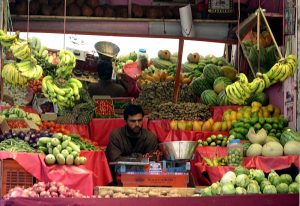Healthy diets are key to improving nutritional status & are recommended ‘double duty actions’- they can improve both under- & overnutrition at the same time. But the role of affordable healthy diets in improving outcomes has received little attention in the Indian context.
In 2015–16 some 38% of preschool children in India were stunted, 21% wasted, and more than half of Indian mothers and young children were anemic. Though widely studied, surprisingly little research on malnutrition in India explores the role of diets, particularly the affordability of nutritious diets given low wages and the significant structural problems facing India’s agricultural sector.
To explore this we used nationally representative rural price and wage data to estimate the least cost means of satisfying India’s national dietary guidelines, referred to as the Cost of a Recommended Diet (CoRD), and assessed the affordability of this diet relative to male and female wages for unskilled laborers. Although we find that dietary costs have increased substantially for both men and women, rural wage rates increased more rapidly, implying that nutritious diets became substantially more affordable over time. However, in absolute terms nutritious diets in 2011 were still expensive relative to unskilled wages, constituting approximately 80–90% of female and 50–60% of male daily wages.
Overall, we estimate that 63–76% of the rural poor could not afford a recommended diet in 2011. Achieving nutritional security in India requires a much more holistic focus on improving the affordability of the full range of nutritious food groups (not just cereals), a reappraisal of social protection schemes in light of the cost of more complete nutrition, ensuring that economic growth results in sustained income growth for the poor, and more timely and transparent monitoring of food prices, incomes and dietary costs read more .
Related Links

Flickr/Amol Hatwar
60 per cent of rural India can’t afford nutritious diets
COVID-19: India’s response and diets of rural poor
Globally, there remain significant knowledge and evidence gaps around how to support Community Health Worker (CHW) programmes to achieve high coverage and quality of interventions.
COVID-19 induced lockdowns have had far reaching impacts on the rural sector, particularly on women farmers.
This paper examines whether the public transfer program PMGKY, announced immediately after the lockdown, benefited farmers in dealing with the COVID shock.

